Friday Fun Facts: The Changing Landscape of Female Homeownership

As we celebrate Women’s History Month, it’s the perfect time to examine the current state of female homeownership in America. Understanding the sociodemographic factors, financial strategies, and challenges women face on their journey to homeownership provides valuable insights into this important market segment.
New Data Reveals Shifting Demographics
Fast forward to this year’s Profile of Home Buyers and Sellers report, and we see that 20% of last year’s home buyers were single women. When we break down the racial and ethnic distribution of these buyers, some interesting trends emerge:
- 80% of single female home buyers identified as white
- Black single female home buyers more than doubled from 5% to 11%
- Asian-Pacific Islander single female home buyers decreased from 7% to 3%
First-Time vs. Repeat Buyers
One compelling insight: a majority (71%) of single female home buyers were repeat customers. This trend held steady across different groups—73% of white and 55% of Hispanic/Latina single female buyers were already familiar with the home-buying process.
Conversely, 61% of Black single female buyers were taking the plunge for the first time, representing the largest group of first-time home buyers among all demographics studied.
Age Distribution Shows Significant Variation
Age-wise, the median age for a single female home buyer increased to 60 from last year’s 55. However, this varies significantly by ethnicity:
- Asian/Pacific Islander women were the youngest with a median age of 36
- White women had the highest median age at 62
Housing Preferences Vary by Background
Regarding the types of homes purchased:
- 63% of single female buyers opted for detached single-family homes
- 24% of Asian/Pacific Islander single female buyers chose apartments or condos in buildings with five or more units
- 12% of Black/African American single female buyers selected townhouses or row houses
Motivations Behind Home Purchases
The driving force behind these purchases varies, but some clear patterns emerged:
- Desire for homeownership: Cited by 28% of single female buyers across the board
- This was especially pronounced among Black/African American (51%) and Asian/Pacific Islander (47%) buyers
- Community proximity: 16% of all single female buyers wanted to be closer to their community, including family and friends
- Family changes: 19% of white buyers and 15% of Hispanic/Latina buyers cited events like marriage or divorce as their primary reason for buying
Neighborhood Selection Factors
Several key factors influenced neighborhood choice across all demographics:
- Quality of the neighborhood (58% of single female buyers)
- Proximity to friends and family (55%)
- Overall affordability (38%)
- Convenience to shopping (33%)
- Job proximity (31%)
This trend held across all racial and ethnic groups, with some variations:
- 68% of Hispanic/Latina and 76% of Asian/Pacific Islander buyers prioritized neighborhood quality
- 43% of Black/African American buyers valued job proximity
- 48% of Hispanic/Latina buyers were influenced by home affordability
Celebrating Progress in Female Homeownership
In summary, the landscape of single female homeownership is as diverse and dynamic as ever, with each group bringing its unique priorities and challenges to the table. As we continue through Women’s History Month, we celebrate their strides and successes in the world of home buying! Interested in learning more? Check out the highlights from the Profile of Home Buyers and Sellers, an annual survey conducted by the NATIONAL ASSOCIATION OF REALTORS®.
Friday Fun Facts – Housing Market Shows Strong Year-End Recovery

As we dive into 2025, let’s look at some fascinating trends from December’s housing market data that might surprise you!
Did You Know?
- Home sales jumped 9.3% compared to December 2023, showing three straight months of year-over-year growth.
- The median home price reached $404,400 in December, up 6% from last year.
- Luxury homes are leading the charge – sales of homes over $1 million surged 35% from last year.
First-Time Buyers Making Moves Good News For New Homeowners!
First-time buyers made up 31% of December sales, showing an uptick from both the previous month and year. This is particularly noteworthy since 2024’s annual average for first-time buyers hit a historic low of 24%.
Regional Spotlight: Western Markets
Our region saw some particularly interesting movement:
- Sales in the West increased 2.6% in December
- Year-over-year sales jumped an impressive 12.9%
- Median price in the Western region: $614,500
What Does This Mean for You?
Whether you’re buying or selling, these numbers tell an important story: despite higher mortgage rates, the market is showing resilience and steady growth. With inventory levels shifting and prices stabilizing in many areas, early 2025 could present some unique opportunities.
Want To Know What These Trends Mean For Your Specific Situation?
Let’s chat! Our Windermere agents are here to help you navigate the market with confidence.
Source: NAR
Friday Fun Facts – Understanding a Buyer’s vs. Seller’s Market

Whether you’re dreaming of your first home or planning to sell your current one, understanding your market position can make a huge difference in your success. Let’s dive into the data-driven differences between buyer’s and seller’s markets.
What Makes a Buyer’s Market?
Think of a buyer’s market as a shopping paradise – lots of homes for sale but fewer people buying. The math is simple: when the market absorption rate falls below 15%, buyers gain the advantage. In these conditions, you’ll see:
- Properties staying on the market 90+ days
- Sellers reducing prices by 5-10% on average
- More than 6 months of housing inventory available
- Multiple homes competing for each qualified buyer
- Sellers often covering closing costs (up to 15% of purchase price)
What Creates a Seller’s Market?
When market absorption rates exceed 20%, sellers gain the upper hand. Current indicators include:
- Homes selling within days, sometimes hours
- Sale prices 10-15% above asking price
- Less than 3 months of housing inventory
- Multiple offers on most properties
- Buyers waiving inspections and contingencies to compete
Market Triggers You Should Know: Economic factors that create these conditions include:
- Interest rates (lower rates typically create seller’s markets)
- Local job market growth or decline
- Population shifts
- Construction rates
- Development regulations
- Economic recessions or booms
How to Calculate Market Status: Use this simple formula:
- Divide active listings by homes sold in the last month
- Results over 7 = Buyer’s Market
- Results under 5 = Seller’s Market
- Between 5-7 = Balanced Market
Curious What The Market Looks Like Locally?
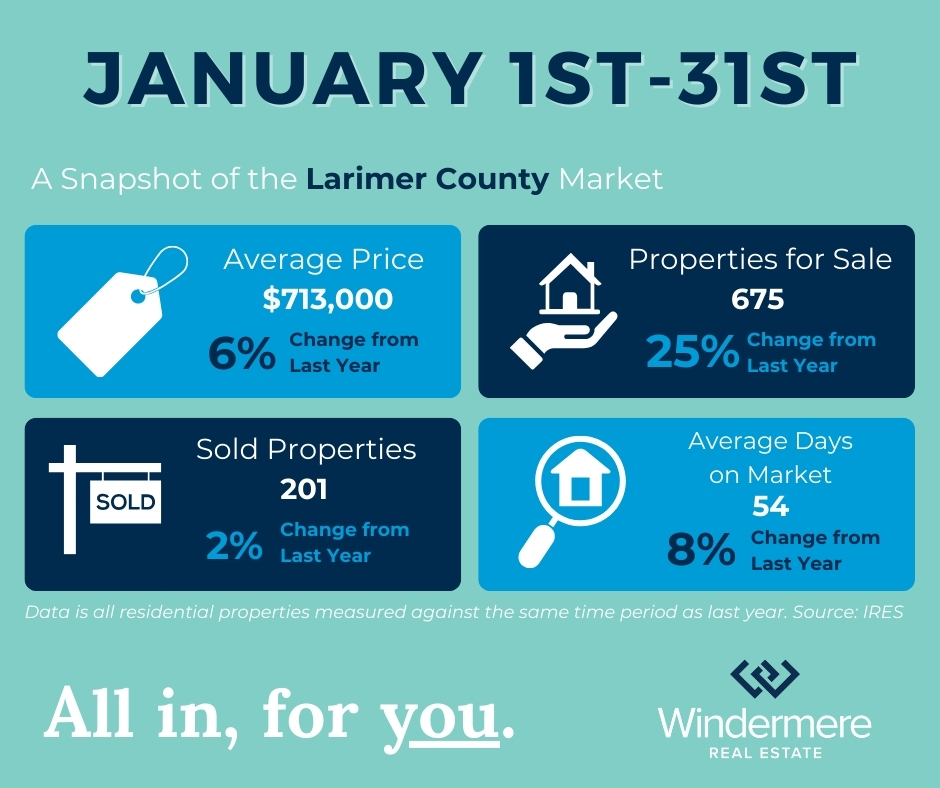

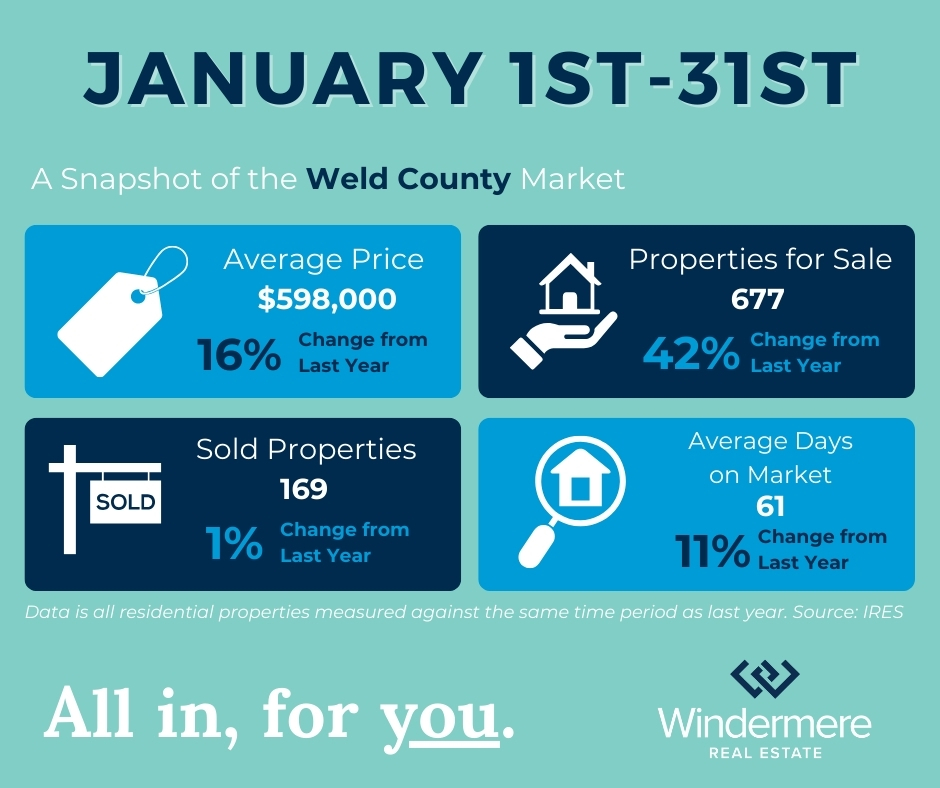
Sources:
https://info.creativehomestagers.com/blog/3-big-differences-between-buyers-and-sellers-markets
https://www.jovio.com/blog/the-difference-between-a-buyers-market-and-a-sellers-market
https://bungalow.com/articles/what-is-a-sellers-markethttps://www.zillow.com/sellers-guide/buyers-or-sellers-market
Friday Fun Facts – Estes Park Skijor, A New Winter Tradition
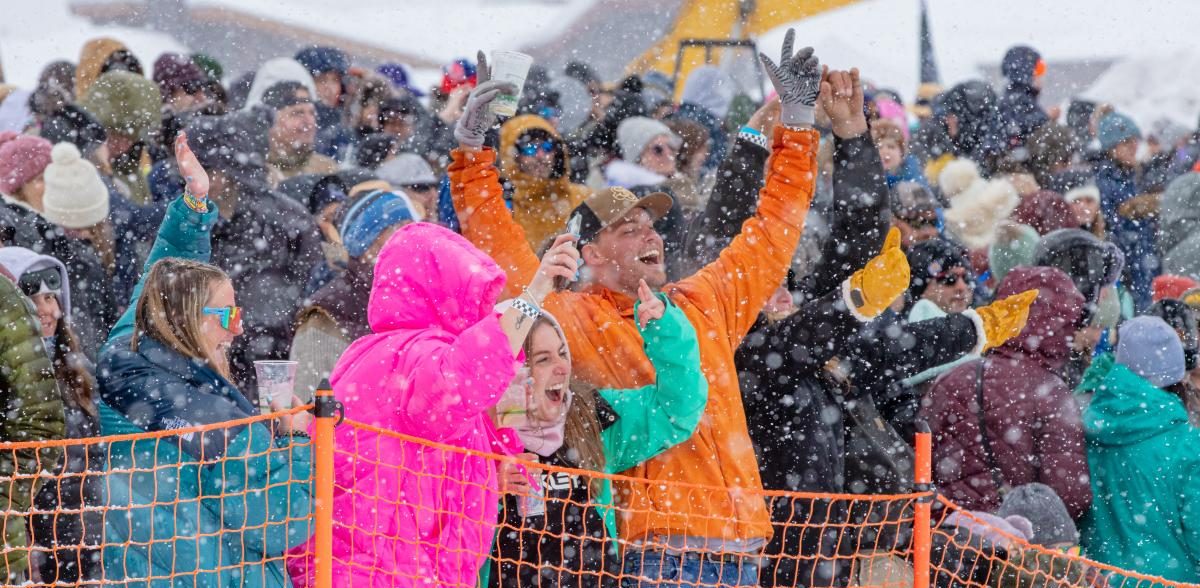
Estes Park Skijor: A Celebration of Winter Sports and Mountain Heritage
The inaugural Estes Park Skijor competition is set to take place on January 24-25, 2025, at the Estes Park Events Complex, bringing a thrilling new winter sports tradition to the heart of the Rocky Mountains. This unique event blends the town’s rich skiing and ranching history into an adrenaline-pumping spectacle that promises excitement for participants and spectators alike.
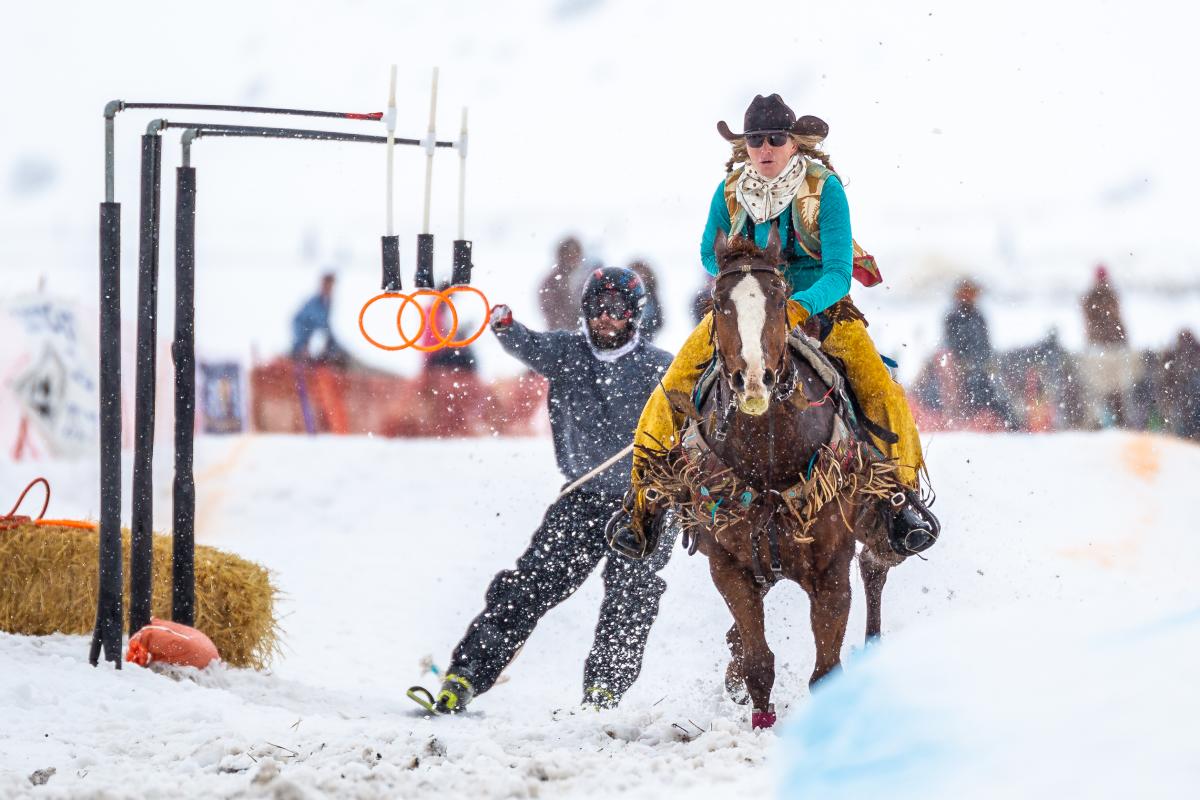
What is Skijoring?
Skijoring is a dynamic winter sport with Norwegian roots, literally meaning “ski driving.” Participants consist of a horse and rider team pulling a skier through a challenging course filled with gates, jumps, and obstacles. What began as a practical mode of winter transportation has evolved into a competitive sport that showcases the incredible skill and coordination of horses, riders, and skiers.
A Perfect Fit for Estes Park
The event is a natural extension of the town’s diverse winter sports heritage. Hidden Valley, once a popular ski resort within Rocky Mountain National Park, defined Estes Park’s skiing culture for decades. Although the resort is now closed, the area remains a hub for winter activities like backcountry skiing, snowshoeing, and sledding. Simultaneously, Estes Park’s deep-rooted ranching traditions and ongoing equestrian culture provide the perfect backdrop for this innovative competition.
Event Highlights
Running from 11 a.m. to 3:30 p.m., the Skijor weekend offers much more than just races:
- Professional athletes in the Open field class competing for cash prizes
- Indoor Warming Hut Expo at the Events Center
- Food truck row featuring local cuisine
- Estes Park craft beer selections
- Comprehensive kids’ activity area with:
- Strider course
- Mini golf
- Coloring stations
- Local vendor marketplace
- Live event streaming on big screens
Behind the Scenes: Preparation and Training
The event isn’t just about the race—it’s about the incredible preparation. Horses must be meticulously trained to remain calm and responsive while pulling a skier. Riders focus on precise control and communication, while skiers practice balance, quick movements, and navigating obstacles.
The horses undergo extensive groundwork, learning to ignore distractions and tolerate the presence of skiers and ropes. Skiers often train in ski parks or with motorized pulls like snowmobiles to simulate the unique conditions of skijoring. The ultimate goal is to create a seamless, synchronized team that can navigate the course with speed and precision.
Why Winter in Estes Park?
January offers a magical time to visit, with snowcapped Rocky Mountains providing a breathtaking backdrop. The lack of a traditional ski resort makes it an affordable winter destination, and the Skijor event adds an extra layer of excitement to the season.
A New Tradition Begins
The Estes Park Skijor represents more than just a sporting event—it’s a celebration of the town’s adventurous spirit, its connection to winter sports, and its equestrian heritage. It invites visitors and locals alike to experience a fresh, exhilarating twist on winter recreation.
Don’t miss this opportunity to be part of a new tradition and witness the spectacular combination of skiing, horsemanship, and mountain culture.
To learn more about this weekend’s events, visit: www.visitestespark.com
Friday Fun Facts – Passive Home Building: A Fire-Resistant Solution in an Era of Increasing Wildfires
As wildfire risk intensifies across America, innovative building approaches like Passive House design are emerging as crucial solutions for resilient home construction. This building method recently gained attention when a passive home in Los Angeles stood alone amid neighborhood destruction during the devastating Palisades and Eaton Fires.
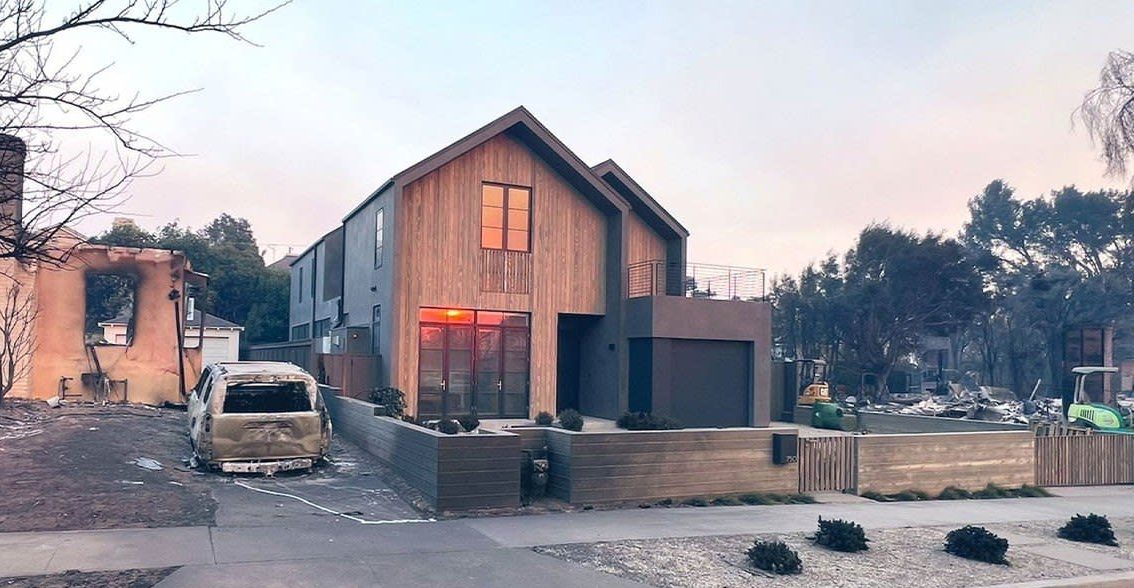 ‘Passive House’ Survives Fire in California (photo:@chasenGreg/X) How Passive Homes Resist WildfiresTraditional homes are particularly vulnerable to wildfires due to their roof venting systems, which can draw burning embers inside the structure. In contrast, passive homes feature a simplified ventilation design with just one air intake point equipped with powerful filtration. During evacuations, this single intake can be closed off completely, providing superior protection against ember infiltration. The Cost FactorWhile passive homes demonstrate remarkable fire resistance, their adoption faces one significant hurdle: cost. Building a passive house typically runs about 7% higher than traditional construction. This price difference helps explain why in Superior, Colorado, where hundreds of homes were destroyed in the Marshall Fire, only six of 300 rebuilt homes incorporate passive design principles. Regulatory Changes on the HorizonThe growing threat of wildfires is spurring legislative action. Colorado has established the Wildfire Resiliency Code Board to implement mandatory wildfire construction codes in high-risk areas. This initiative is particularly significant considering that Colorado alone has one million structures in wildfire-prone zones, while nationwide, 44 million homes (one-third of U.S. housing) sit in high-risk areas. Looking AheadHomeowners are increasingly viewing passive home construction as an investment in long-term security rather than an added expense. With climate conditions increasing favoring rapid fire spread, passive home building represents a proactive approach to living with and protecting against wildfire risks. The success stories of passive homes surviving intense wildfires suggest that this building method could become a crucial element in creating more resilient communities in fire-prone regions across the country. Source: CBS News |
Friday Fun Facts – Colorado’s Single-Family Housing Shortage: A Positive Path Forward

Colorado’s growing need for single-family homes is a challenge, but it also represents an opportunity to build stronger, more resilient communities. With its stunning landscapes and thriving economy, the state is well-positioned to embrace innovative solutions to meet the demand for housing.
The factors contributing to this shortage are clear:
- population growth
- rising costs
- zoning limitations
However, these challenges also pave the way for creative problem-solving and collaboration. By rethinking how housing is built and expanding opportunities for diverse development, Colorado can set an example for other states facing similar issues.
The benefits of addressing this housing shortage are far-reaching. Families will have greater access to homeownership, essential workers can live closer to their jobs, and communities can maintain their vibrancy. Rising to meet these needs isn’t just about building homes—it’s about creating lasting opportunities for current and future residents.
Communities across the state are already exploring solutions. Adjusting zoning regulations to allow for more housing types, encouraging affordable construction, and investing in infrastructure to support growth are just a few of the promising approaches. With input from policymakers, developers, and residents, Colorado can craft a balanced and sustainable path forward.
The housing shortage may be a challenge, but it’s also a chance to innovate and thrive. Together, Coloradans can create a future where housing is accessible, communities are strong, and opportunities are abundant for everyone who calls this beautiful state home.
Friday Fun Facts – Building for Multi-Generational Living

The National Association of REALTORS® reports a significant increase in multi-generational home purchases, reaching 17% of all home purchases in the past year—the highest since 2013. This trend is driven by factors such as cost savings (36%), caring for aging parents (25%), adult children returning home (21%), and adult children who never left (20%).
Married couples constitute 58% of multi-generational home buyers, while single females account for 19%. The median age of these buyers is 57, with 77% aged 45 and above.
The “Sandwich Generation,” individuals balancing care for both aging parents and their own children, represents a significant portion of multi-generational home buyers. Among those purchasing for aging parent care, 29% also have children under 18 at home. Additionally, 17% of these buyers carry student loan debt, with a median balance of $30,000.
Multi-generational living arrangements offer financial and emotional support, fostering stronger family bonds and shared caregiving responsibilities. However, they also require careful management of privacy, space, and interpersonal dynamics.
Many builders in the Northern Colorado area are paying attention to this trend and are building homes that can cater to this type of living situation.
Source: NAR
Friday Fun Facts – Best Mountain Towns To Buy Property In The Next 5 Years
Fort Collins keeps landing on “best places to live” lists, proving it’s a top-tier city for anyone looking for an awesome hometown. So it’s no surprise that it was recently named one of the four best mountain towns to buy a home in the next five years by GoMortageRates.com.
With an average home price of $554,755 and a modest 0.9% price change in the last 12 months, Fort Collins is experiencing steady growth. Located 60 miles north of Denver and home to Colorado State University, the city offers a family-friendly environment with excellent schools, a robust job market, a thriving arts community and outstanding outdoor recreation.
The COVID-19 pandemic triggered an unprecedented urban exodus, with remote work opportunities and health concerns driving Americans to less populated mountain regions, a migration that continues even years later. Fort Collins and three other mountain towns offer promising real estate opportunities for those seeking a different pace of life.
Curious what other towns made the list? Here they are:
Bend, Oregon
- Average home price: $728,226
- Strong rental demand from residents and tourists
- Solid property appreciation potential
- Attractive for diverse investment strategies
Blue Ridge, Georgia
- Average home price: $491,808
- Year-round tourism driving real estate market
- Growing population with quality of life amenities
- Robust short-term and long-term rental markets
Seattle, Washington
- Average home price: $848,982
- Home to 17 Fortune 500 companies
- Unique mountain town with strong economic fundamentals
- Expected population growth of 1 million by 2040
- Challenging housing supply due to geographical constraints
Source: GoBankingRate.com
Friday Fun Facts – What Remodeling Projects Are Best For Resale?

Thinking about remodeling your home?
In 2023, Americans spent approximately $363 billion upgrading and remodeling their homes. Not all remodeling projects are created equal… so which investment gives the best return when it comes to resale value?
It might not be a surprise that the best money to spend upgrading your home is in the kitchen – it’s the place where most homeowners spend the majority of their waking hours. According to research from the National Association of Realtors, it’s also where remodelers will see the biggest return on investment.
Here is the ranking of various projects in terms of the value they add to the home:
-
-
- Complete kitchen remodel
- Kitchen upgrade
- HVAC replacement
- Owner’s suite renovation
- Bathroom renovation
- Finishing a basement
- Adding a bathroom
-
Bottom line: Home upgrades are a smart play, and kitchens are where the real money is. These renovations aren’t just about looking good – they’re about boosting your home’s value and making your space work for you. So whether you’re dreaming of granite countertops or a sleek new stove, your kitchen remodel is likely to pay off when it’s time to sell.
Friday Fun Facts – Thanksgiving Edition!
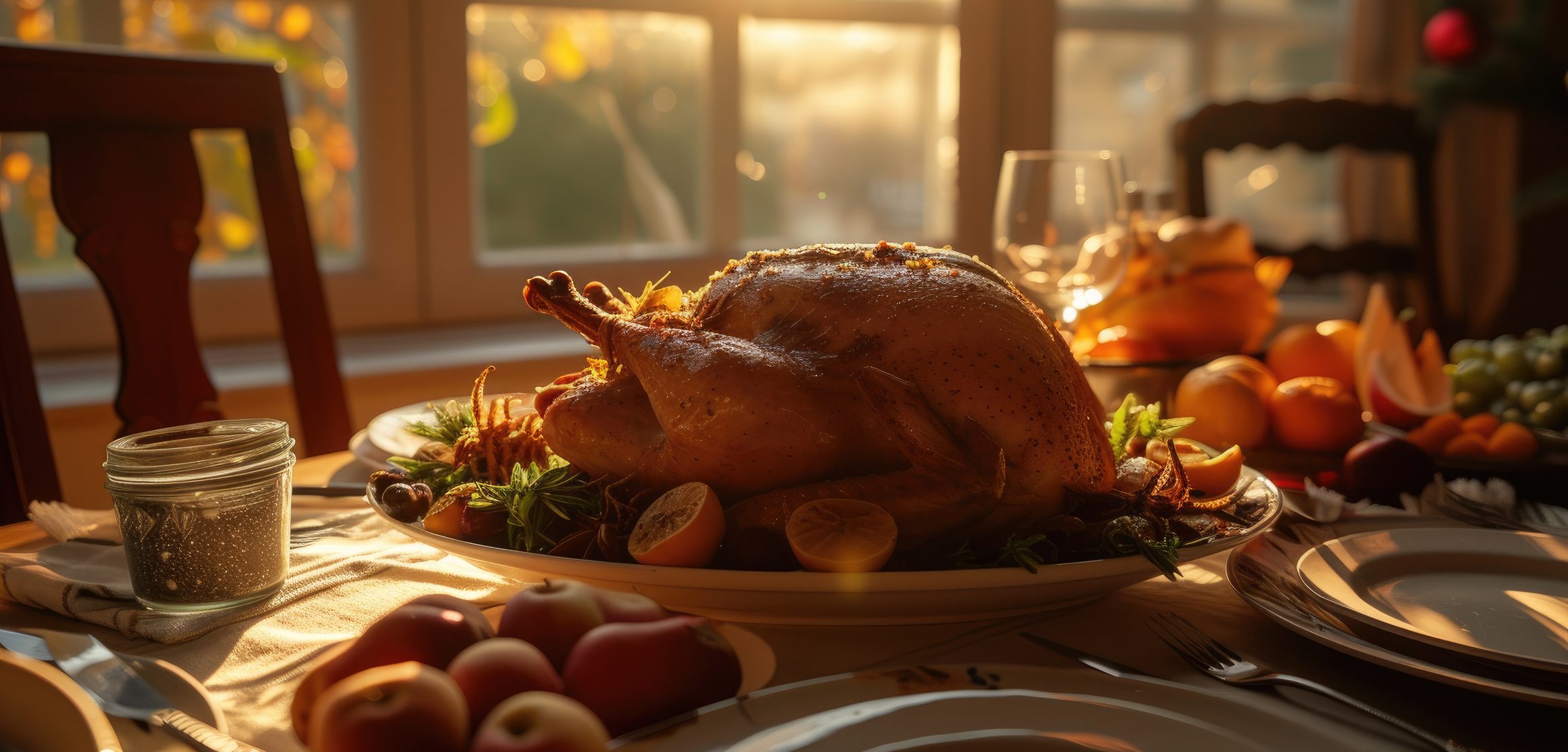
Fun and Fascinating Thanksgiving Facts
Thanksgiving is a beloved holiday in the United States, celebrated with family gatherings, festive meals, and a spirit of gratitude. While many know the basics of the tradition, there are some lesser-known facts about this cherished day that might surprise you.
1. The First Thanksgiving Wasn’t Just One Day
The first Thanksgiving in 1621, shared by the Pilgrims and the Wampanoag people, was a three-day feast. It included not just food but also games, singing, and other forms of entertainment. Surprisingly, turkey wasn’t the centerpiece—it’s more likely they dined on venison, seafood, and wildfowl.
2. It Wasn’t an Official Holiday for Over 200 Years
While Thanksgiving was celebrated sporadically in different states, it wasn’t until 1863 that President Abraham Lincoln declared it a national holiday. He did so during the Civil War, hoping to unify the nation with a day of gratitude.
3. The Macy’s Parade Tradition Began in 1924
The famous Macy’s Thanksgiving Day Parade in New York City started in 1924, featuring live animals borrowed from the Central Park Zoo instead of the giant balloons we know today. The parade now draws millions of viewers in person and on television.
4. Americans Eat an Astounding Amount of Turkey
Each year, about 46 million turkeys are consumed on Thanksgiving. If you lined up all the turkeys eaten, they would stretch across the United States!
5. The “Turkey Pardon” Tradition
Every year, the President of the United States ceremonially “pardons” a live turkey, sparing it from becoming dinner. This quirky tradition is believed to have started in the 1940s, though it became an annual event in the late 1980s.
6. It’s One of the Biggest Travel Days of the Year
Thanksgiving sees millions of Americans traveling to be with family and friends, making it one of the busiest times for air travel and road trips.
7. Football and Thanksgiving Go Hand in Hand
Thanksgiving football games date back to the late 1800s. The first NFL Thanksgiving game was played in 1920, and the Detroit Lions have hosted a Thanksgiving Day game every year since 1934 (except during World War II).
From its historical origins to modern-day traditions, Thanksgiving is a celebration of gratitude, family, and community. As you enjoy your turkey and pumpkin pie, take a moment to appreciate the rich history behind this beloved holiday!
 Facebook
Facebook
 X
X
 Pinterest
Pinterest
 Copy Link
Copy Link